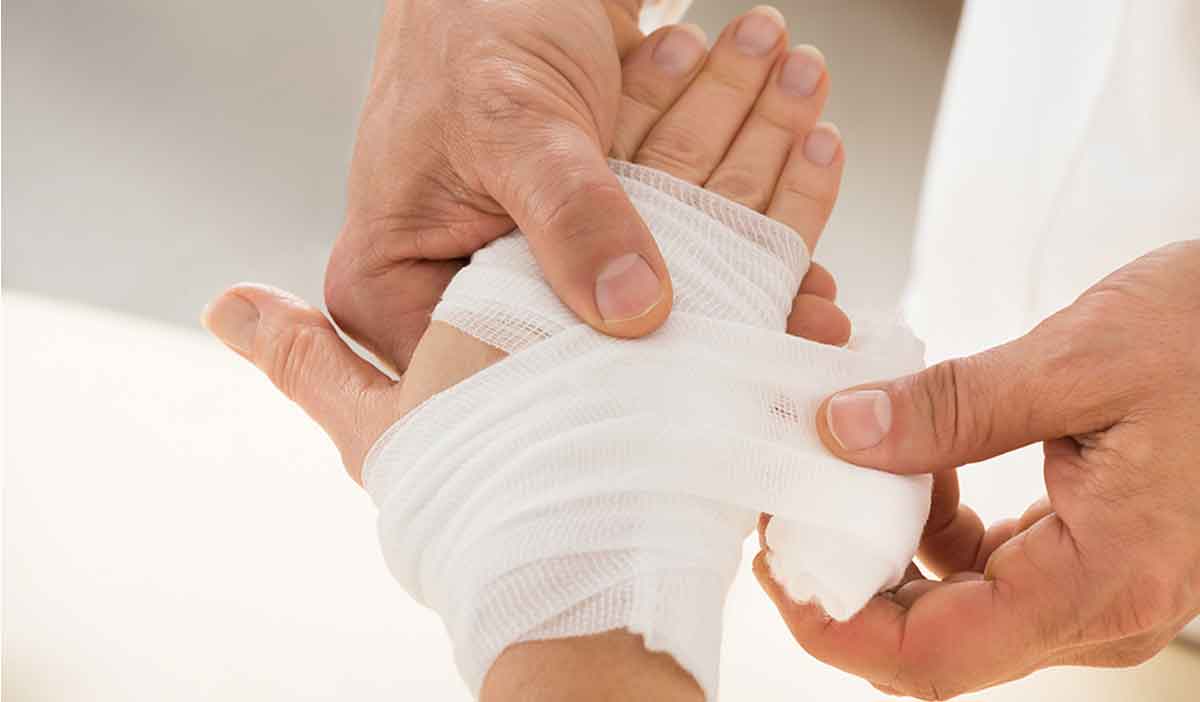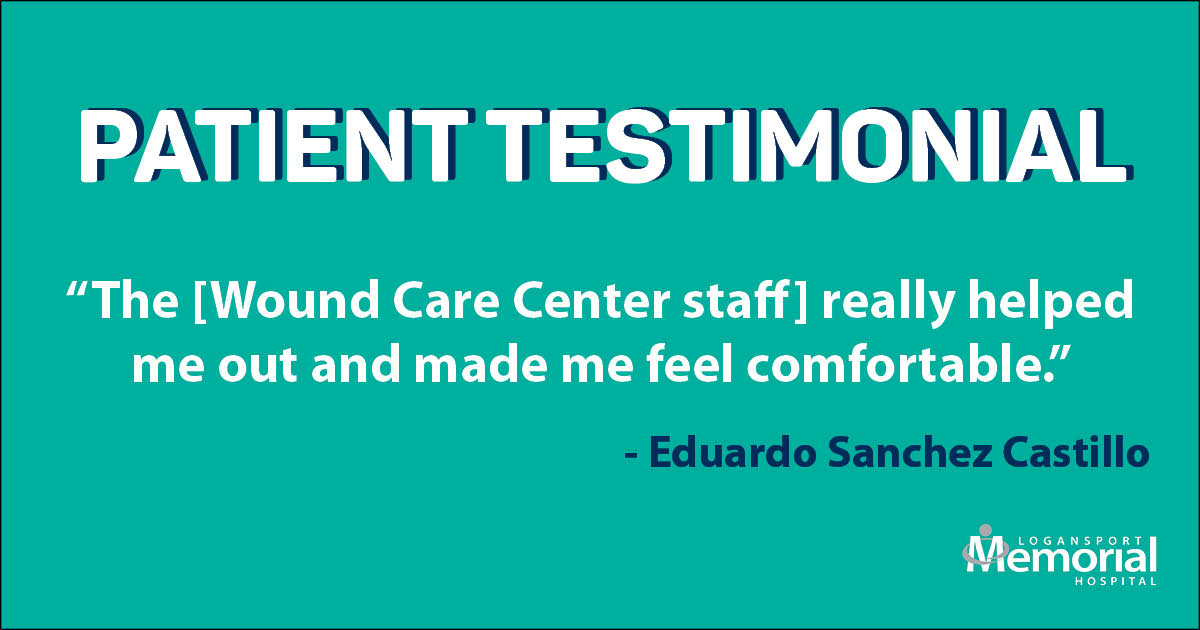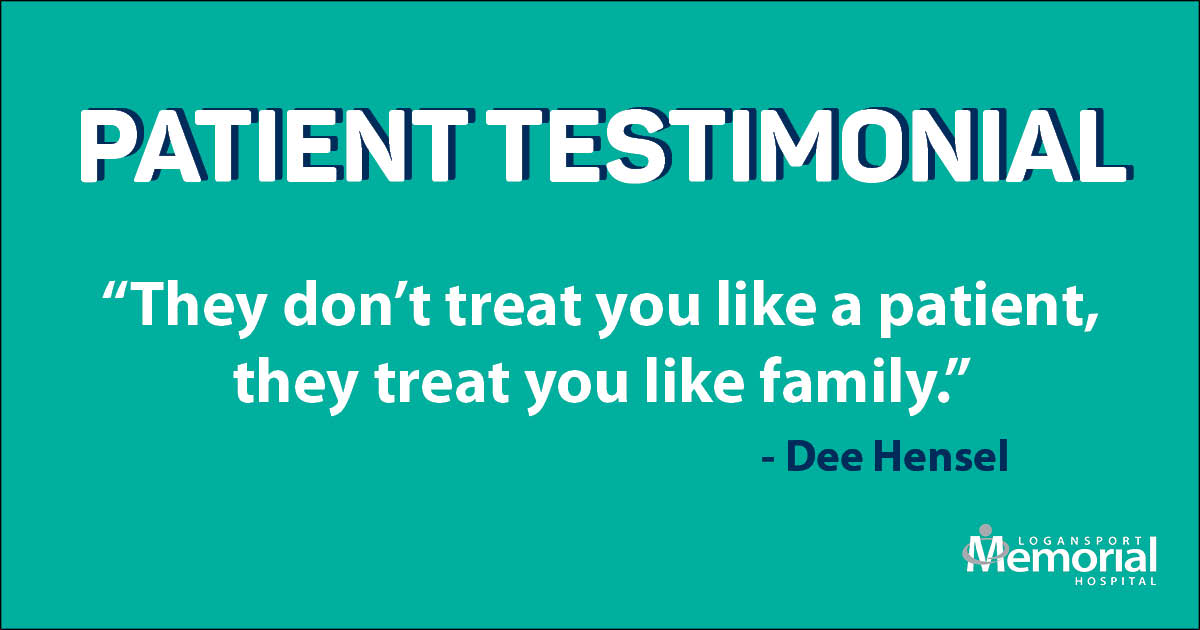Healing chronic and stubborn wounds can be a lengthy process. There are many reasons why your wound might stop healing.
Don’t let a stalled wound stall your treatment plan. The best way to continue healing is to talk with your physician about how you can properly restart your wound healing process.

The wound healing process
Healing a wound requires the following steps:
Stopping the bleeding
As your wound bleeds, your blood cells will begin to clot to stop the bleeding. This is when your blood clot will form a scab which becomes a protective barrier for your wound to properly heal.
Inflammation
Inflammation is a sign that healing is taking place under the scab. It’s what happens when your red and white blood cells work together to heal and fight off infection.
Healing
Healing happens when your blood cells (and oxygen from your blood cells) work together to rebuild new skin and create a new layer of protection. This process can be seen as a scar that starts out red and over time lightens up and blends with your skin tone.
Strengthening
As your scar starts to fade and your wound becomes unnoticeable, your skin is strengthened and your wound is almost completely healed.
When your wound stops making progress against each of these steps, you know your healing has stalled and you need to see a provider about what to do to kick start the healing process again. Your provider may have a better understanding of why your wound is having trouble when healing.
Why wounds stops healing
A wide range of lifestyle factors, like diet, sometimes impact wound healing, but one of the biggest reasons a wound may stop healing is a lack of blood supply. Your blood contains all the nutrients and oxygen necessary to help a wound heal. When your blood supply to the wound is limited, your healing may begin to stall.
Another reason a wound may stop healing is due to improper care. Wounds take a long time to heal, and—after awhile—proper care may start to be overlooked. Wounds need to be clean, need time to breathe, and need the proper medication and bandages to provide protection and support healing.
It is important to use the proper antibiotics and creams as directed to prevent infection. Follow directions and always use medicines as your provider directs to ensure your wound heals as planned.
The most important thing to remember is that even if your wound healing stalls, your treatment efforts should continue as before. That’s because your wound can worsen and your progress can take a step back if you let you stop taking proper care of your wound.
Wound care treatment at Logansport Memorial Hospital
We offer hope for healing here at the Logansport Memorial Wound Care Center.
Patients are mostly referred by their primary care physician, and the program operates by appointment. Upon referral, patients undergo a thorough diagnostic examination to identify the type of wound that they have and figure out any underlying problems causing problems with healing the wound.
Based on the evaluation, a customized treatment plan is developed to optimize the therapies best suited to address each patient’s needs. Wound size and depth are documented at the initial visit, and again at each subsequent visit.
How we treat non-healing wounds
At the Logansport Memorial Wound Care Center, we follow treatment protocols specifically established for each type of wound and provide the latest approaches to wound healing and care.
Our wound care team
The Center is made up of a team of professionals, including:
- Physicians with advanced training in wound management and hyperbaric oxygen therapy
- Nursing staff trained in caring for chronic wounds
- Technicians who perform non-invasive studies and various therapies
- Experienced staff to assist with appointment, medical records, and health insurance processing
- Personalized wound treatment programs
Learn more about our Wound Care Center.
Having questions about treating chronic wounds? Download the Complete Guide to Wound Care.
You might also like:
- What Is the Chronic Wound Epidemic?
- What to Eat to Speed Up Wound Healing
- What Happens at a Wound Care Center




